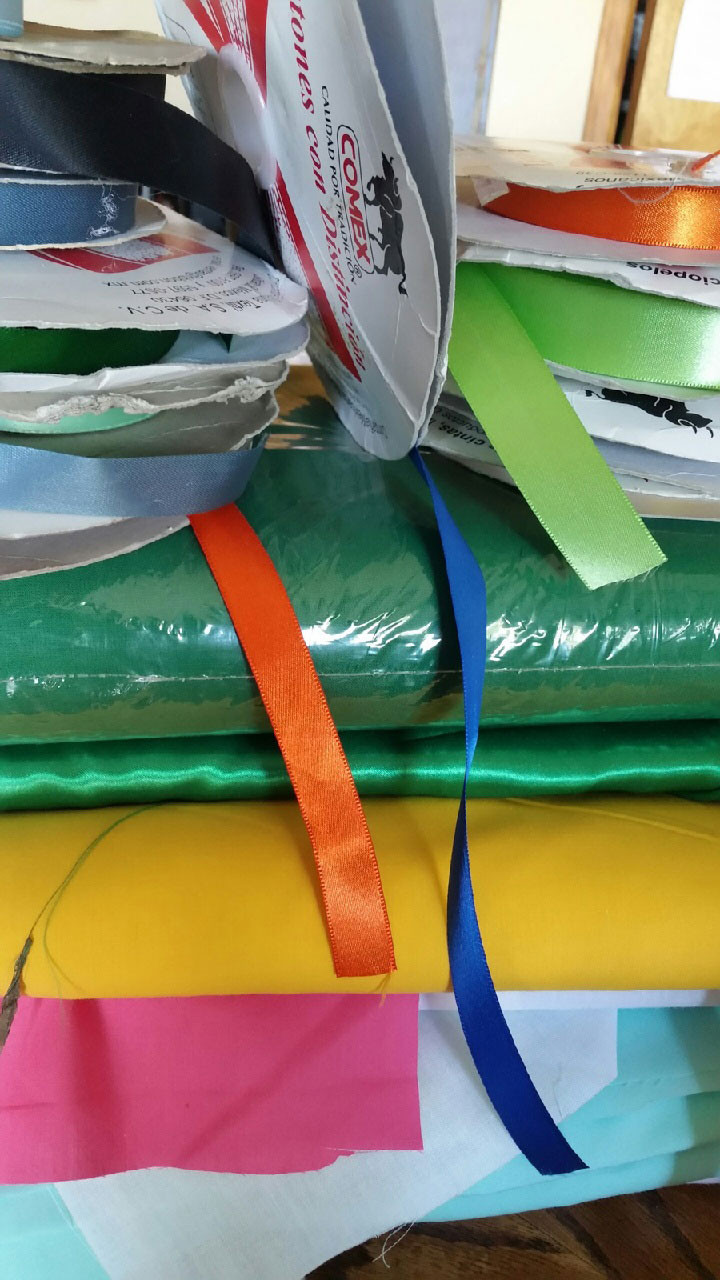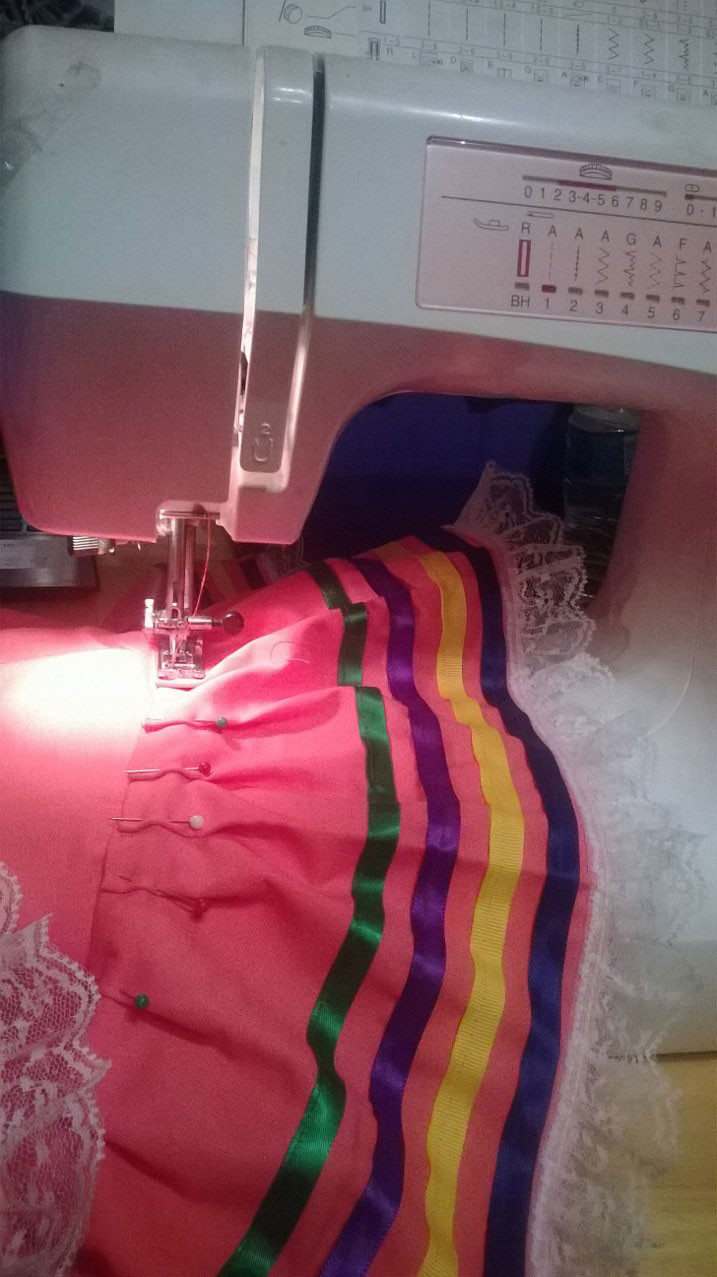Mexican Dance Dresses, often known as “folklorico dresses,” are more than just garments; they are vivid expressions of Mexico’s rich cultural heritage, regional diversity, and history. These dresses, with their swirling skirts, bright colors, and intricate designs, play a central role in Mexican folk dance, or “baile folklorico,” bringing stories, traditions, and emotions to life through movement and music. Sandra Garcia, a passionate costume designer, embodies the spirit of preserving this heritage. Through her demonstrations and creations, she offers a fascinating glimpse into the world of Mexican dance costumes, emphasizing the artistry and cultural significance woven into every thread.
A Tapestry of Regions: Exploring the Diversity of Mexican Dance Dresses
The beauty of Mexican dance dresses lies in their remarkable diversity, reflecting the unique traditions and characteristics of each region within Mexico. From the northern states to the Yucatan Peninsula, each area boasts its distinct style of dress, music, and dance.
- Jalisco Dresses: Perhaps the most iconic, dresses from Jalisco are known for their vibrant colors, often featuring solid bright hues complemented by white lace and numerous layers of ribbons in contrasting colors. These dresses are synonymous with the energetic and widely recognized Jarabe Tapatio, often referred to as the “Mexican Hat Dance.”
- Veracruz Dresses: In contrast, dresses from Veracruz, particularly the southern region, are typically white and airy, designed to flow gracefully with the movements of dances like La Bamba. These dresses often feature delicate embroidery and are paired with rebozos (shawls) and elaborate headpieces.
- Oaxaca Dresses: The state of Oaxaca showcases incredible textile artistry. Dresses here vary significantly across its regions, but many are known for their rich embroidery, often depicting floral and geometric patterns. The Isthmus of Tehuantepec region in Oaxaca is famous for its “traje de tehuana,” a powerful and elegant dress often adorned with velvet and intricate floral embroidery.
- Yucatán Dresses: The traditional dress of Yucatán, known as the “hipil,” is typically white, embroidered around the square neckline and hem with colorful floral motifs. These dresses, influenced by Mayan and Spanish traditions, are lighter and designed for the warm climate of the peninsula.
Sandra Garcia’s work beautifully highlights this regional variation, emphasizing the importance of understanding the historical and cultural context behind each costume. Her demonstrations at the Denver Art Museum, where she showcased fabrics and color selections from the 1800s to 1930s, offered visitors a tangible connection to this rich tapestry of traditions.
 Ribbons and fabric of different colors
Ribbons and fabric of different colors
Image: Assortment of colorful ribbons and fabrics, representative of materials used in creating vibrant Mexican dance dresses.
The Craftsmanship Behind the Costume: Materials, Movement, and Meaning
Creating an authentic Mexican dance dress is a meticulous process that goes beyond sewing fabric together. It requires a deep understanding of the dance itself, the movements it entails, and the cultural significance of each element of the costume.
Sandra Garcia emphasizes several key aspects in her costume creation:
- Fabric Selection: Lightweight fabrics are preferred to ensure ease of movement for dancers and simplify cleaning and maintenance. Broadcloth, sheeting, and poly-cotton blends are commonly used for their practicality and durability.
- Color Significance: Color choices are deeply rooted in regional traditions and symbolism. While performers may sometimes choose personal colors, traditional colors are often dictated by the specific dance and region the costume represents. Ribbons and embellishments further enhance the visual storytelling, with colors often carrying specific cultural meanings.
- Movement Considerations: The design of a dance dress is intrinsically linked to the movements of the dance. Whether it’s the wide skirts needed for swirling motions in Jalisco dances or the flowing fabrics that accentuate the graceful steps of Veracruz dances, every element is carefully considered. Accessories like hats, masks, and props are also crafted with materials appropriate for the specific dance and performance.
Sandra Garcia’s background, deeply rooted in her mother’s sewing traditions and her own exploration of Mexican folk dance history, informs her approach to costume design. She learned to appreciate the practical aspects of garment making from her mother and sister, while her passion for Mexican dance drove her to research historical photographs and regional variations, ensuring authenticity in her creations.
 A pink dress being sewed on a sewing machine
A pink dress being sewed on a sewing machine
Image: Close-up of a pink fabric being sewn on a sewing machine, depicting the detailed craftsmanship involved in creating Mexican dance dresses.
Preserving Heritage, Stitch by Stitch: Sandra Garcia’s Legacy
For Sandra Garcia, creating Mexican dance dresses is more than a craft; it is a mission to preserve and share the rich cultural heritage of Mexico. Her dedication stems from a deep appreciation for tradition, inspired by her family’s roots and her own involvement with Mexican folk dance.
Seeing dancers, especially young children, wearing her creations brings immense satisfaction and reinforces her commitment. The fact that her dresses continue to be worn and cherished, sometimes even passed down through generations of dancers, speaks volumes about the quality and cultural relevance of her work.
Sandra Garcia’s passion extends beyond creation to education. By demonstrating her techniques and sharing her knowledge, as she did at the Denver Art Museum, she ensures that the art of Mexican dance costume making is not lost. She inspires future generations to appreciate and continue this vibrant tradition, keeping the stories and spirit of Mexican dance alive through each beautifully crafted dress.
In conclusion, the Mexican dance dress is a powerful symbol of cultural identity and artistic expression. Through the dedication of artisans like Sandra Garcia, this vibrant tradition continues to flourish, captivating audiences worldwide with its beauty, history, and the dynamic energy of Mexican folk dance.

